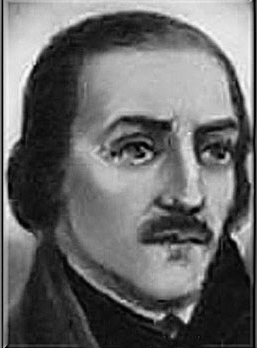Thomas Woodhouse facts for kids
Quick facts for kids BlessedThomas Woodhouse |
|
|---|---|
 |
|
| Born | c. 1535 |
| Died | 19 June 1573 (aged 37 - 38) Tyburn, London, England |
| Venerated in | Roman Catholicism |
| Beatified | 29 December 1886 by Pope Leo XIII |
| Feast | 19 June |
Thomas Woodhouse was an English Catholic priest who lived a long time ago. He was put to death in London on June 19, 1573, because of his strong Catholic beliefs. He is remembered as a martyr, which means someone who died for their faith.
Contents
Life and Faith
Thomas Woodhouse became a priest during the last years of Queen Mary Tudor's rule. He worked as a church leader, called a rector, in Lincolnshire for less than a year. In 1560, he became a private teacher in Wales. However, he left this job too. He had different religious beliefs from the people he worked for.
Arrest and Imprisonment
On May 14, 1561, Thomas Woodhouse was arrested. This happened while he was leading a special church service called Mass. He was then sent to the Fleet Prison in London. He stayed in prison for the rest of his life. He never changed his mind about his Catholic faith. He secretly held Mass every day. He also regularly prayed from his prayer book.
In May 1571, he heard some news. Another person, John Story, was going to be put to death. Story was accused of supporting a rebellion called the Rising of the North. Thomas Woodhouse bravely offered to take Story's place. He wanted to die instead of Story.
Joining the Jesuits
Thomas Woodhouse secretly talked with a group of priests called the Jesuits. They were based in Paris. He was welcomed into the Society of Jesus through letters. The Jesuits are a Catholic religious order. Even though he joined them, some official records still called him a "secular priest." This means he was a priest who did not belong to a specific religious order.
Defiance and Letters
For a while, Thomas Woodhouse was treated quite kindly in prison. But on November 19, 1572, things changed. He sent a famous letter to Lord Burghley, a powerful government official. In his letter, he asked Lord Burghley to make peace with the Pope. He also strongly asked Queen Elizabeth to accept the Pope's authority. He believed the Queen had been wrongly removed from her spiritual position.
A few days later, he met Lord Burghley in person. He spoke just as strongly to him. After this, he was kept alone in his prison cell. He wrote many papers. These papers tried to convince people to follow the true Catholic faith. He signed these papers. Then, he tied them to stones and threw them into the street. He wanted people outside to read his messages.
Trial and Execution
Thomas Woodhouse was questioned many times. Sometimes, these questionings were public. Other times, they were private. The Queen's advisors thought he might be crazy. Once, he said the Queen did not have the right to rule. Someone told him, "If you saw her Majesty, you would not say so. Her Majesty is great." Thomas Woodhouse replied, "But the Majesty of God is greater."
His trial happened in April 1573 at the Guildhall. Thomas Woodhouse refused to accept the judges' power. He also said that a regular court could not judge a priest. He was found guilty of treason. Treason means going against your country or ruler.
He was put to death at Tyburn on June 19, 1573. He continued to argue that the Queen needed to ask the Pope for forgiveness. Some people in the crowd shouted, "Hang him, hang him! This man is worse than Story!"
Legacy
Thomas Woodhouse was later honored by the Catholic Church. He was "beatified" by Pope Leo XIII in December 1886. Beatification is a step towards becoming a saint. The Jesuits consider him their first martyr in England. A martyr is someone who dies for their faith. Blessed Thomas Woodhouse is remembered on June 19 each year.
Sources
 This article incorporates text from a publication now in the public domain: "Blessed Thomas Woodhouse". Catholic Encyclopedia. (1913). New York: Robert Appleton.
This article incorporates text from a publication now in the public domain: "Blessed Thomas Woodhouse". Catholic Encyclopedia. (1913). New York: Robert Appleton.

